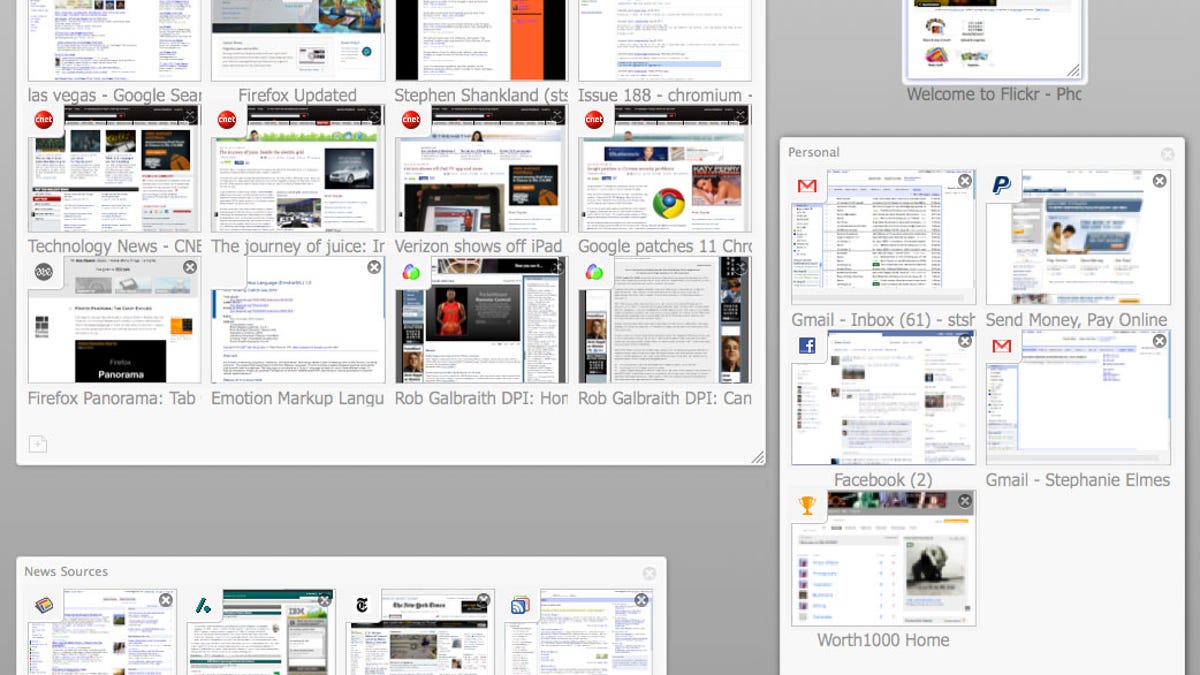Firefox 4 beta 4 tackles browser tab chaos
Trying to restore a semblance of order to the tab profusion that afflicts some people's Web browsers, Mozilla introduces Panorama. Also in new beta: Firefox Sync.
Mozilla released its fourth beta of Firefox 4 on Tuesday, bringing a new feature that addresses one of the biggest challenges in the new era of the browser: reclaiming control over the burgeoning number of tasks that now happen on the Web.
Available for Windows, Mac, and Linux, Firefox 4 beta 4 introduces a feature now called Firefox Panorama. Today's browsers typically cram tabs in a strip along the top of the window, but Panorama provides a Mac OS X Expose-like interface that groups tabs into related bunches.
Panorama presents an array of thumbnail images, each representing a tab. The thumbnails reside in rectangular boxes that constitute a group. Tabs can be moved from one group to another, and groups can be named and moved as well.
The overall idea is to make it easier to switch from one tab to another, to group or regroup related tabs, and overall to see what's going on. It's potentially a big improvement in browser usage, compared to aiming a mouse at an ever-skinnier tab, cycling through a list with alt-tab keystrokes, or pecking at a drop-down menu to reach the tabs that overflowed off the end of the list.
And notably for Mozilla, during a time of increasingly fierce browser competition, it's a feature none of its rivals possess right now. Opera has been taking swipes at the challenge with thumbnails of tabs, though, and on Monday, there were signs that Google is starting to tackle the problem more seriously. "I am working with the design leads to find a solution to this," Google Chrome engineer Andrew Bonventre said in discussion of the Chrome "tab overflow" issue.


